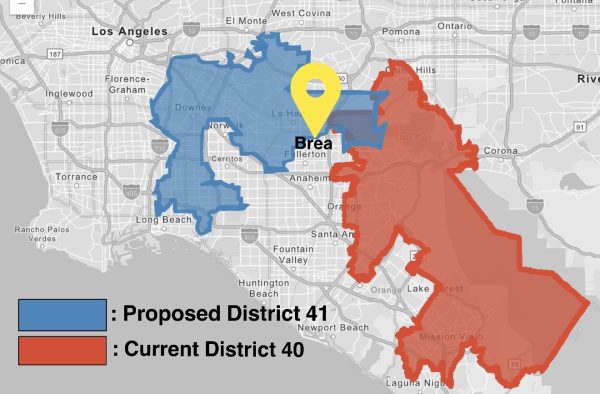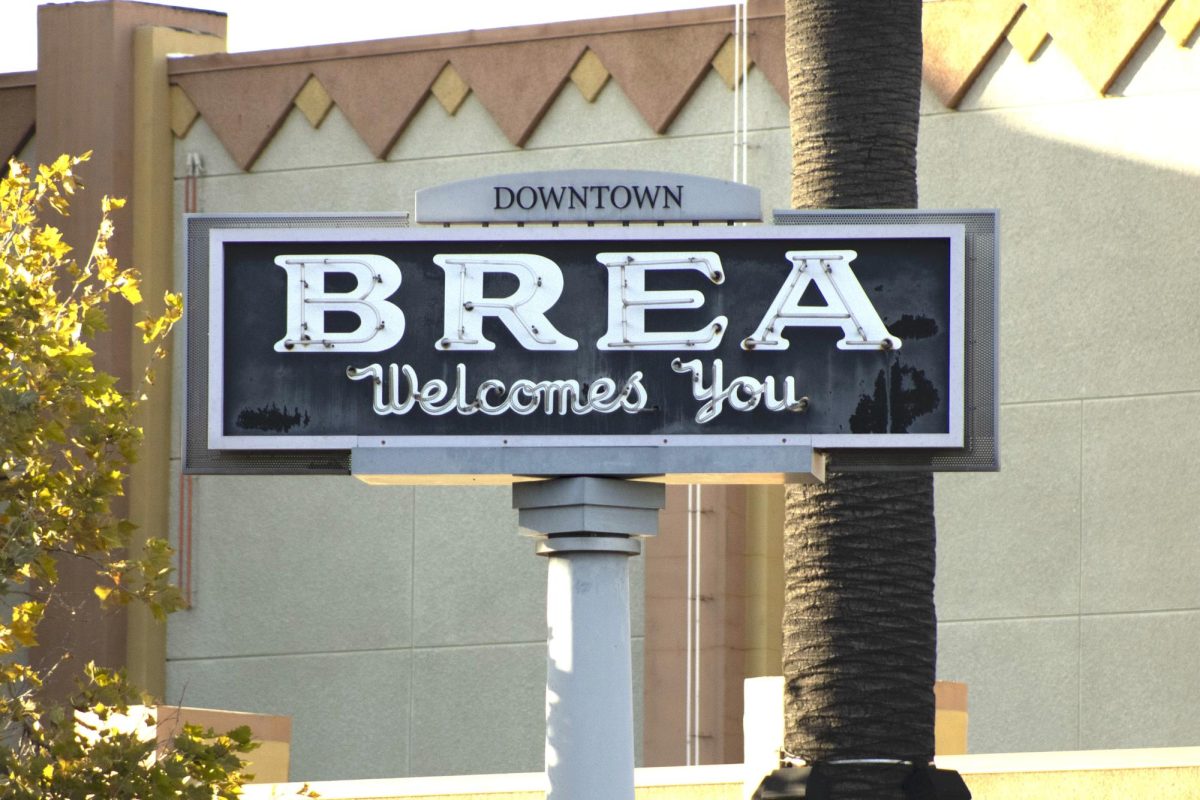The city of Brea may face a dramatic change in the city’s historically red political landscape pending the voting results on Proposition 50 in November.
California Gov. Gavin Newsom signed a three-bill package Aug. 21 for a redistricting special election to be held Nov. 4. The plan, also called the Election Rigging Response Act, will redraw California’s voting districts, including District 40, which the city of Brea is part of.
A “yes” on Prop. 50 would flip five Congressional districts in favor of the Democrats. Newsom described the special election as “emergency measures to respond to what’s happening in Texas,” where lines have been redrawn to flip five Democrat House seats to Republican.
If Prop. 50 passes, Brea, and its north Orange County neighbor La Habra, will separate from their current Congressional District – which includes the cities of Aliso Viejo, Anaheim, Brea, Chino Hills, Corona, Lake Forest, Laguna Hills, Laguna Woods, Mission Viejo, Orange, Rancho Santa Margarita, Tustin, Villa Park and Yorba Linda, and the unincorporated communities of Coto De Caza, North Tustin, and the eastern Orange County canyon communities – and join a reconstructed District 41, which would include the southern Los Angeles County cities of Bell Gardens, Downey, Santa Fe Springs, La Habra, La Mirada, Lakewood, and Whittier.
Although the redistricting does not target greater Orange County, cities at the county’s most northern edge, such as Brea and La Habra, would experience a shift in voting demographics. A revamped District 41, for instance, will have more registered Democrats at 46% than Republicans at 26%. Currently, the district leans Republican, with 178,780 registered voters, versus 152,311 registered Democratic voters, as reported by OC Vote.

For Brea, represented since 2021 by Republican Congresswoman Young Kim and Democratic Congressman Derek Tran, being absorbed into a Democrat-majority district would shift its political history.
“Young Kim’s district is one of the ‘red-vote sinks,’ though much of her district would now be outside of OC,” Rob Robinson, Associate Professor of Political Science at California State University, Fullerton (CSUF), told the Wildcat via email. “The other main impact is that districts currently held by Democrats in OC will become more Democratic-leaning.” (District “red-vote sinks” is a term to describe districts with a high concentration of Republican voters.)
Since 1936, Orange County voted Republican in every presidential election until 2016 when the county voted for Hillary Clinton. Since then, the county has continued to vote blue, for former President Joe Biden in 2020, and for former Vice President Kamala Harris in 2024.
The change in these voting trends has shifted Orange County from a historically red county, to purple, half-Democrat, and half-Republican).
“Orange County was once the heart of the modern conservative movement,” CSUF Associate Professor of Political Science Matthew Jarvis said in an email to Wildcat. He added:
“Starting in the 1990s, the increasing diversity of Orange County and California pushed them towards the Democrats. Trump pushed it so that Democrats could win Orange County; in 2018, every member of Congress elected from OC was a Democrat. In particular, Trump has realigned educated people; before 2016, college graduates leaned slightly Republican; they now lean solidly Democratic.”
With OC becoming more of a swing county (a “swing” in politics is a change in voter support), the proposed maps will spread traditionally Republican strongholds across Democrat-supportive districts, and strengthen already Democrat-leaning districts to become even more blue.
Robinson noted that OC’s political realignment “was already the trend before [Prop. 50]” and “would just lock those changes in further.”
Typically, California redistricts after every US Census, with 2021 being the most recent year of redistricting. But with Newsom’s new bill, there will be new maps for 2025, 2028, and after the 2030 Census.
The Republican party has attempted to block the bill from passing twice, citing that it would violate California’s constitution, but the blocks were rejected in the state Supreme Court.
The Republican party of California has also raised concerns about gerrymandering.
“Gerrymandering is redrawing district lines to the advantage of the majority party,” Jill Matyuch, U.S. Government teacher, said. “Texas is attempting to do it in favor of the Republican party; California is posturing on behalf of the Democrats.”
While California’s maps are typically drawn by an independent commission to protect against gerrymandering and voting dilution under the 2008 Voters First Act, Prop. 50 will temporarily override this.
One method of gerrymandering is “packing” a minority group into one district, while another method is spreading the opposing party’s voters thin among multiple districts, diluting their votes.
Both political parties have accused the other of gerrymandering.
“There are no states more gerrymandered than California and Illinois and New York,” Texas Gov. Greg Abbott said in an Aug. 5 appearance on Fox News.
Newsom responded on social media platform X, “Two can play at that game,” in reference to Abbott’s redistricting in Texas. The result: Prop. 50.
Voting in the statewide special election on Nov. 4 will ultimately determine Brea’s political future.



















Jacquelyn • Sep 4, 2025 at 5:12 am
Excellent coverage, Allison!